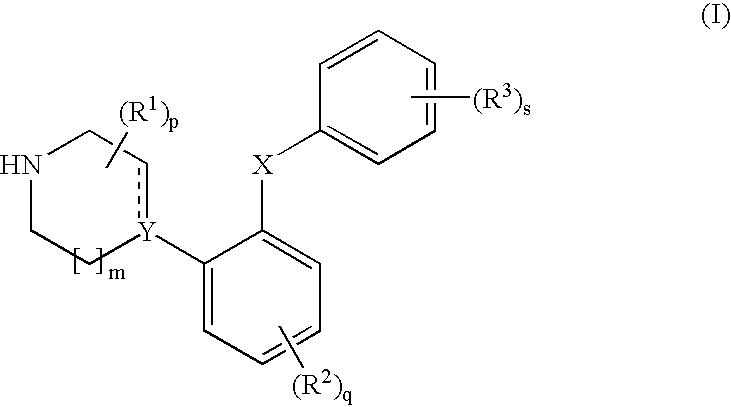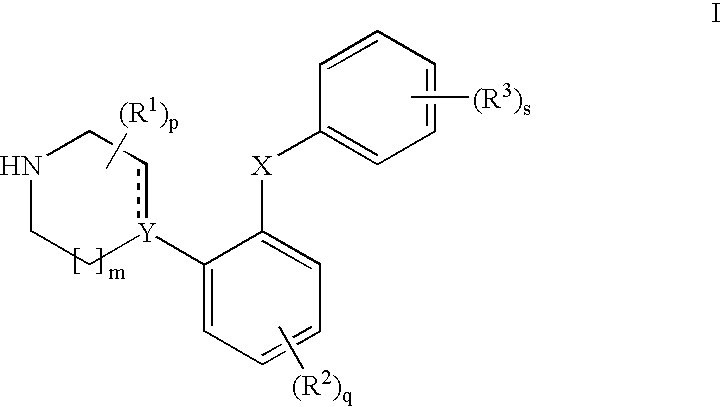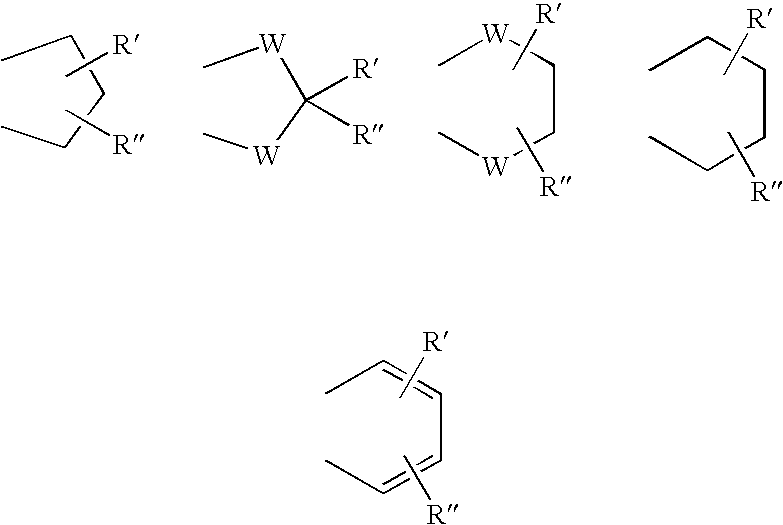Phenyl-piperazine derivatives as serotonin reuptake inhibitors
a technology of serotonin reuptake inhibitor and phenylpiperazine, which is applied in the direction of heterocyclic compound active ingredients, drug compositions, biocides, etc., can solve the problems of delayed therapeutic effect of ssris, sexual dysfunction is a common side effect, and symptoms worsen
- Summary
- Abstract
- Description
- Claims
- Application Information
AI Technical Summary
Benefits of technology
Problems solved by technology
Method used
Image
Examples
example 1
1a, 1-[2-(2-Trifluoromethylphenylsulfanyl)phenyl]piperazine
To a solution of 2-trifluoromethylthiophenol (1.75 g, 9.8 mmol) in a 1:1 mixture of tetrahydrofuran / dimethylformamide (30 mL), sodium hydride (7.4 mmol, 60% in mineral oil) was carefully added at room temperature (Caution: Generation of hydrogen). The mixture was stirred for an additional 30 min after the generation of hydrogen had ceased. Subsequently, 4-({4-[η6-(2-chloro-phenyl)-η5-cyclopentadienyliron(II)]piperazin-1-yl}carbonyloxymethyl)phenoxymethyl polystyrene hexafluorophosphate (3.5 g, 2.45 mmol) was added and the mixture was stirred at 55° C. for 12 h. After cooling to room temperature, the resin was filtered off and washed with tetrahydrofuran (2×50 mL), tetrahydrofuran / water (1:1) (2×50 mL), N,N-dimethylformamide (2×50 mL), water (2×50 mL), methanol (3×50 mL), tetrahydrofuran (3×50 mL), and subsequently with methanol and tetrahydrofuran (each 50 mL, 5 cycles). Finally, the resin was washed with dichloromethane ...
example 2
2a, 2-(4-Methylphenylsulfanyl)phenyl-1-piperazine hydrochloride
1-tert-Butyloxycarbonyl-4-[2-(4-methylphenylsulfanyl)phenyl]-3,5-dioxo-piperazine (5.5 g, 13 mmol) was dissolved in dry THF (50 mL) and placed under a nitrogen atmosphere. Borane tetrahydrofuran complex (50 mmol, 1.0 M) in tetrahydrofuran was added and the reaction was refluxed for ten minutes. Excess borane was quenched by the addition of an excess of ethyl acetate and the reaction was refluxed for a further 20 minutes. The reaction was allowed to cool to room temperature before hydrogen chloride dissolved in methanol (50 mL, 4 M) was added and the reaction was refluxed for 4.5 hours. The reaction was allowed to cool to room temperature and the reaction was concentrated in vacuo. The compound was crystallised from the gum residue by the addition of ether / methanol solution. The crystalline solid was filtered and washed with ether / methanol (1:1) to give a white crystalline solid. Yield (2.0 g, 47%) 1H NMR (D6-DMSO) 2.3...
example 3
3a, 1-[2-(4-Chlorophenylsulfanyl)phenyl]-3-methylpiperazine
2-(3-Methylpiperazin-1-yl)phenylamine (0.96 g, 5 mmol) was dissolved in 30 mL water containing sulfuric acid (0.28 mL, 5.2 mmol) and the solution was cooled to 0° C. and sodium nitrite (0.36 g, 5.2 mmol) was added. The reaction was stirred for 30 minutes before the pH of the reaction was adjusted to pH 7 with sodium acetate. The diazonium salt solution was then added dropwise to a solution of 4-chlorothiophenol in a suspension of copper (0.3 g, 5 mmol) in 2 M NaOH (4 mL). After addition, the reaction mixture was heated to 60° C. for 30 minutes before being allowed to cool to room temperature and ethyl acetate (10 mL) was added. The reaction mixture was filtered and the layers were separated. The aqueous layer was extracted with ethyl acetate (2×10 mL). The combined organic phases were dried (MgSO4) and volatile solvents evaporated in vacuo. The crude product was purified by flash chromatography using silica gel, eluting w...
PUM
| Property | Measurement | Unit |
|---|---|---|
| affective disorder | aaaaa | aaaaa |
| obsessive compulsive disorder | aaaaa | aaaaa |
| anxiety disorder | aaaaa | aaaaa |
Abstract
Description
Claims
Application Information
 Login to View More
Login to View More - R&D
- Intellectual Property
- Life Sciences
- Materials
- Tech Scout
- Unparalleled Data Quality
- Higher Quality Content
- 60% Fewer Hallucinations
Browse by: Latest US Patents, China's latest patents, Technical Efficacy Thesaurus, Application Domain, Technology Topic, Popular Technical Reports.
© 2025 PatSnap. All rights reserved.Legal|Privacy policy|Modern Slavery Act Transparency Statement|Sitemap|About US| Contact US: help@patsnap.com



